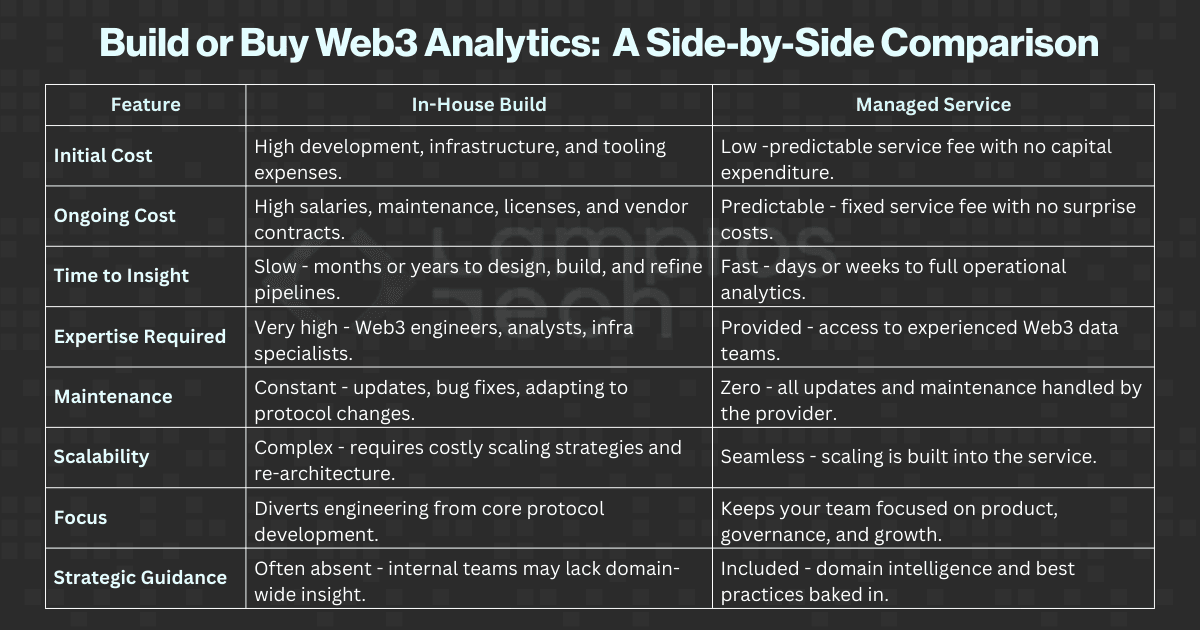Contact Us
If you're working on something real — let's talk.
Development & Integration
Blockchain Infrastructure & Tools
Ecosystem Growth & Support
© 2025 Lampros Tech. All Rights Reserved.
Published On Sep 15, 2025
Updated On Sep 15, 2025



Growth Lead
FAQs

Internal builds can cost nearly $1.8 million over five years, while managed solutions average around $900,000 over the same period.

Building is viable for large, well-funded teams with unique data structures, strong in-house engineering talent, or strict sovereignty requirements.

The main risks are potential vendor lock-in and less flexibility in custom metrics. However, most providers now support hybrid models to reduce this risk.

Key providers include Goldsky, Flipside, Subsquid, and Envio, all of which support multi-chain coverage across rollups and modular stacks.

Because data maturity is seen as proof of operational discipline. Teams that can’t demonstrate reliable analytics often fail the first filter for funding or partnerships.